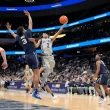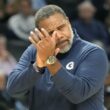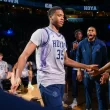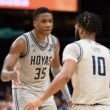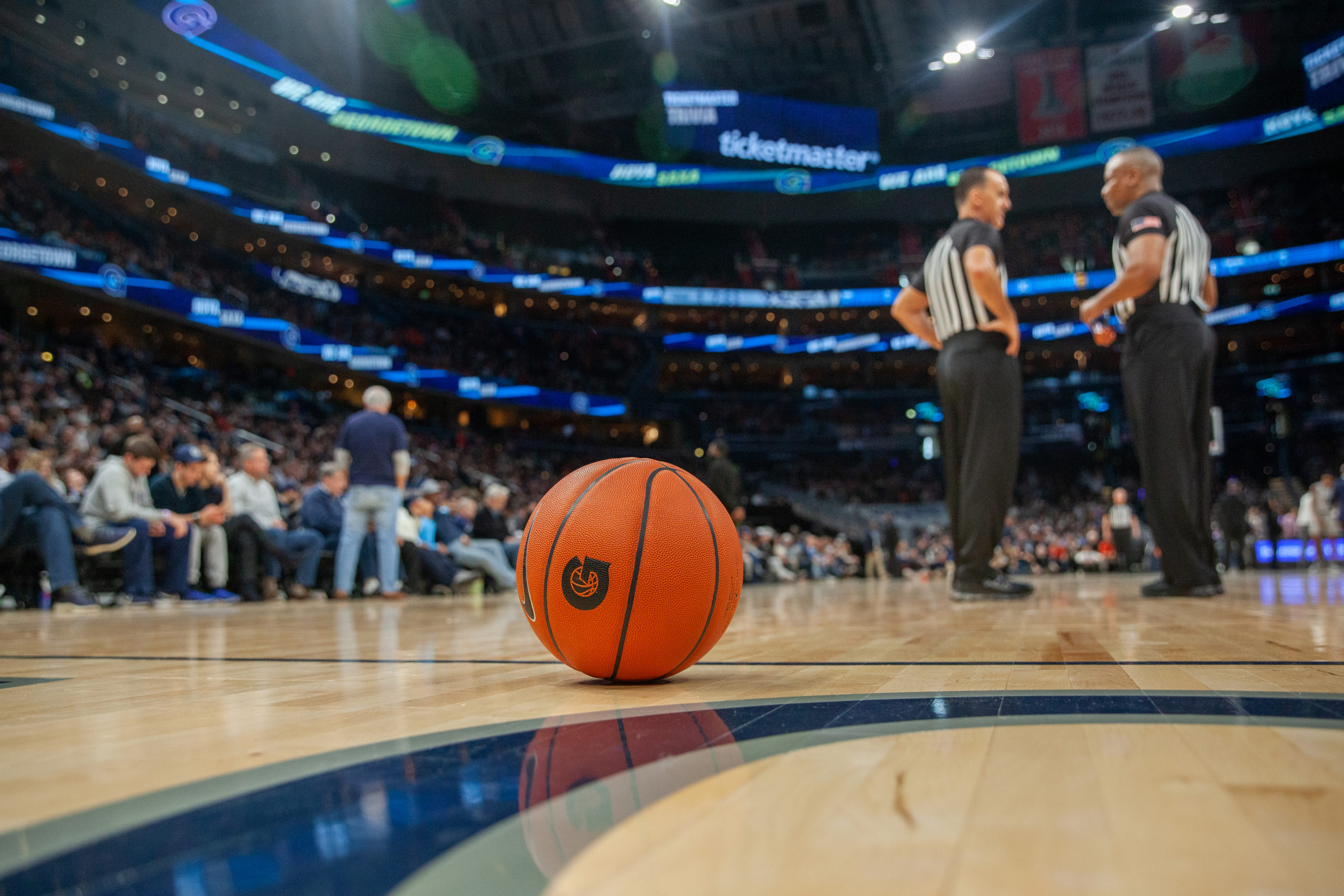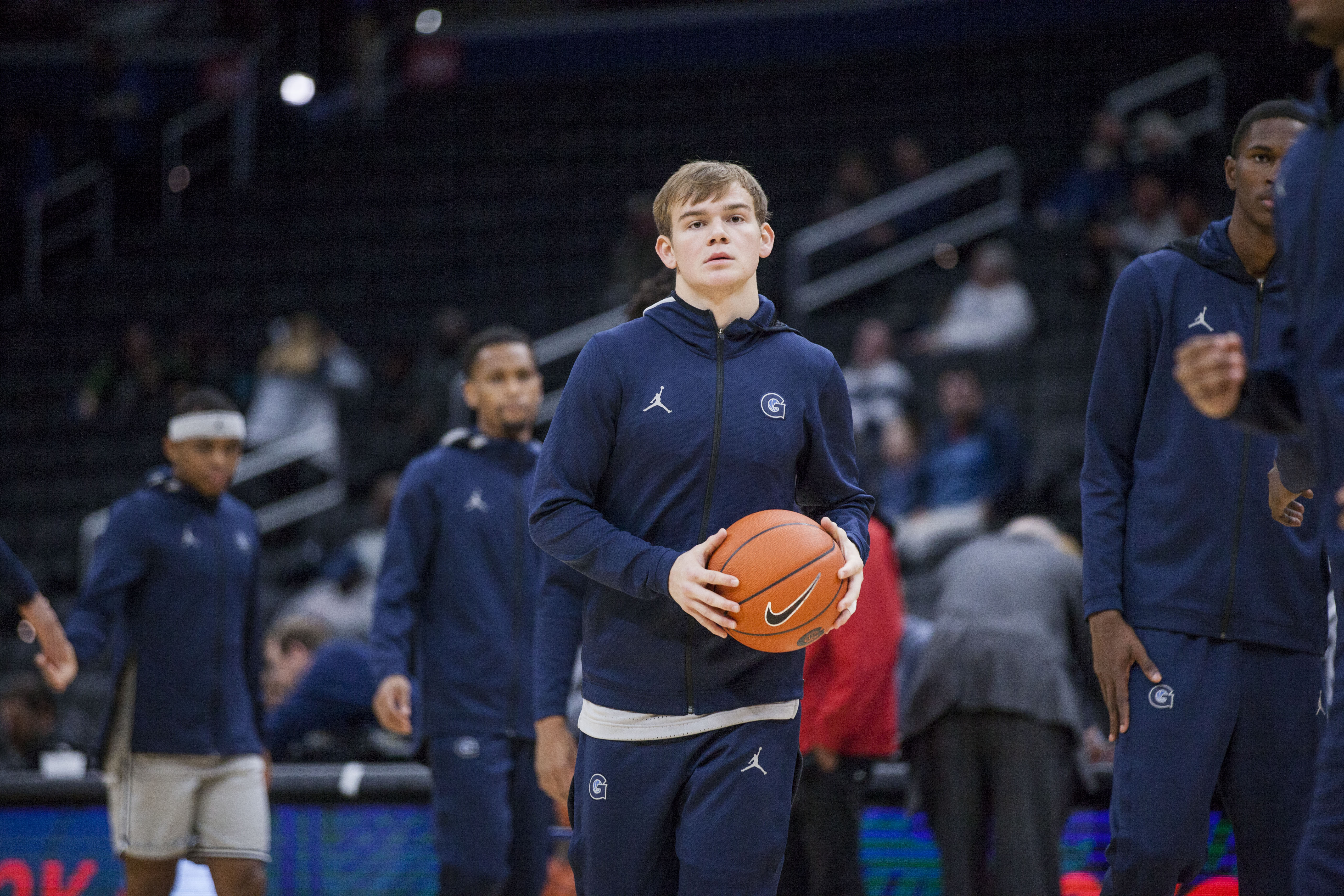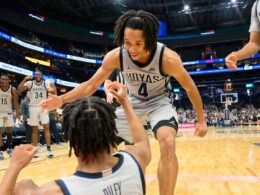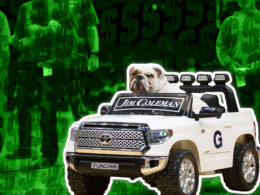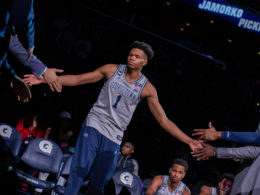Every year, the biggest sports-related occasion on July 1 is usually Bobby Bonilla Day. However, things are a bit different in 2021.
This year, the date of July 1 holds particular significance within the realm of sports—the landscape of college athletics has changed dramatically with the introduction of NIL rights for all NCAA athletes. You’ve likely heard the hubhub about “NIL”, and you probably have questions about it. We’ve got you covered with this primer on NIL and what it means for Georgetown specifically.
What is NIL?
Let’s start with the basics. NIL stands for “Name, Image, and Likeness.” Before today, college athletes were prohibited from profiting off of the sale of their NIL rights.
The history of why student-athletes couldn’t profit off of their own names and likenesses for so long is complex. However, at the core of it was a guiding belief that allowing college athletes to be able to profit off of themselves was antithetical to the spirit of amateurism. People may disagree on whether allowing college athletes to benefit from their NIL rights erodes the spirit of amateurism, but NIL is here to stay. Despite a long-standing opposition to allowing college athletes to profit off of their NIL rights, the NCAA had their hand forced.
A dozen states have legislation going into effect today that makes it illegal to prohibit athletes from making money off of their NIL rights. Therefore, the NCAA had to act. And now today, college athletes at the NCAA level from Division I to III and in both men’s and women’s sports get control over their NIL rights.
What college athletes getting control over their NIL rights doesn’t mean is that schools can pay players—that is still prohibited. It does mean that college athletes can now monetize their social media accounts, sell merchandise, and star in their own ad campaigns. College athletes can also hire agents to handle their marketing deals (depending on state law), although there are still specific restrictions on agents as it relates to the draft process.
If you’re asking who governs NIL, that’s a good question. As it currently stands, the NCAA doesn’t have any policies in place governing NIL, according to their press release yesterday. Instead, they have suspended their rules that prohibited student-athletes from profiting off of their NIL. The NCAA opted to adopt this interim policy, which also dictates that colleges based in states with NIL laws will follow those laws, and that colleges based in states without those laws will have to develop their own policies in the meantime.
The NCAA punted the creation and monitoring of NIL policy to the individual schools and the conferences to avoid becoming liable to antitrust challenges. In the long term, it appears that the hope from the NCAA is for Congress to pass a federal law.
The issues and questions surrounding NIL are complex and multifaceted. This above is only a brief summary, but for comprehensive reporting on NIL, I recommend checking out Amanda Christovich’s ongoing coverage of the topic at Front Office Sports. She’s also a Georgetown grad, which is pretty awesome.
What are the implications for Georgetown?
Washington D.C. doesn’t have any NIL laws on the books, and there isn’t any legislation pending. For these states (and districts) with these legal gray zones, the NCAA advised that schools based in a state without a NIL law should develop their own policies.
One would hope Georgetown gets the memo that they need to develop their own policy, especially since John DeGioia is the chair of the NCAA Board of Governors. Of course, this is Georgetown we’re talking about.
A tricky point that Georgetown might have to contend with is that players might be able to get deals within the footprint of the DMV area, which of course, goes beyond Washington D.C. While neither Washington D.C. nor Virginia has any NIL legislation, Maryland has its NIL law taking effect in 2023. For now, Georgetown will be able to get by with just their policy (whenever they decide to articulate that). However, if DC and Virginia pass their own laws and Maryland’s law goes into effect, the athletic department will have to contend with the possibility of there being a patchwork of legislation across three different jurisdictions.
However, there is a golden opportunity here for Georgetown. They can make themselves a more attractive destination for recruits and allow their players to benefit from the hard work they’ve put in to get to where they are. But once again, this is Georgetown we’re talking about.
Other athletic departments have launched NIL platforms and have partnered with organizations to help educate student-athletes on how to build their brands and use their platforms. Some programs, such as USC, have created individualized brands for each of their players to use.
Although the fanbase may not be the size it used to be, there’s still a loyal following in the DMV. And nationally, Georgetown’s name still carries cachet, as evidenced by the outpouring of support following the Hoyas’ miracle run to March Madness earlier this year. Georgetown is a sleeping giant. With the program on an upward trajectory (and if Georgetown manages to sustain that upwards momentum), the Hoyas will hopefully soon be back in the national conversation regularly.
In particular, if the Hoyas can reawaken the dormant casual fanbase within the DMV, that could go a long way toward retaining local recruits. With few other programs of Georgetown’s size and caliber in the area (save for Maryland), DMV recruits can be enticed with the possibility of staying home and getting to benefit from the local reputations they’ve built for themselves.
The national renown of Georgetown and the Big East could help sway recruits the Hoyas’ way.
This all depends on if Georgetown actually puts staffing and resources behind content creation and all the other things that will make an NIL regime enticing to recruits. People like to kick up a stink about Georgetown basketball’s social media presence, but the program is improving considerably on that front, although there’s always more to be done. At the end of the day, when it comes to recruiting and NIL, the programs with established identities, fanbases, and resources will win out. Georgetown needs to position itself to do so early on.
Make no mistake: top recruits will be looking at which programs have good NIL programs and support. Georgetown has several positives going for it that can help in creating a strong NIL program, but they have to meet the moment and take advantage of those positives.
You can either adapt to NIL and integrate it into the fabric of your program, or you can be like Dan Hurley, befuddled by NIL and what it portends. In an interview with Yahoo, Hurley said of NIL; “What exactly is going to happen? Am I going to drive by a car dealership seeing one of the players do a signing? What is going on here?” Adapt to the changing times, or perish (or alternatively, babble to yourself as you drive by a car dealership at the sight of Adama Sanogo selling his autograph).
Additionally, NIL opportunities abound for Georgetown and its student-athletes.
Perhaps a player can step up and take over as the spokesperson for Jim Coleman Toyota and save Jack the Bulldog the indignity of being driven in a Camry when his heart yearns to skateboard.
Maybe fans can cheer on their favorite player by wearing that player’s merchandise to games, instead of having to wait as we did in the past for players (such as Jagan Mosely) to graduate and then release their merch shop.
Hell, if they ever make another college basketball video game, imagine getting to play as the Hoyas with the likenesses and attributes of the players on the actual team. (That’s a long way from happening for a variety of reasons, such as group licensing, but a guy can dream.)
A marriage made in heaven (but one that is no longer possible) would have been a Wisey’s advertising campaign starring TJ “Berger Madness” Berger. We still love you and wish you all the best at San Diego TJ, but you didn’t see the vision!
Student athletes in other sports at Georgetown can benefit from NIL as well, from women’s soccer to the men’s lacrosse team. Yes, even the student-athletes for the “non-revenue” sports can benefit—for example, a NAIA volleyball player used the NAIA’s NIL rules to monetize their TikTok following.
The Upshot
Ultimately, NIL is here for the foreseeable future. There are definitely drawbacks and pitfalls to the advent of NIL opportunities for college athletes, but there are also real benefits for players and programs. It’s a brave new world, and as a Georgetown fan, I sincerely hope that the program not only capitalizes on the opportunities that this offers, but also educates all of its student-athletes (not just the men’s basketball players) on NIL and provides them with the institutional support to empower them to make the best decisions for themselves.
Also, I’m totally ready to buy a ton of insert product here whenever insert Georgetown student-athlete endorses it. If it ends up being defense consulting services, so be it.
